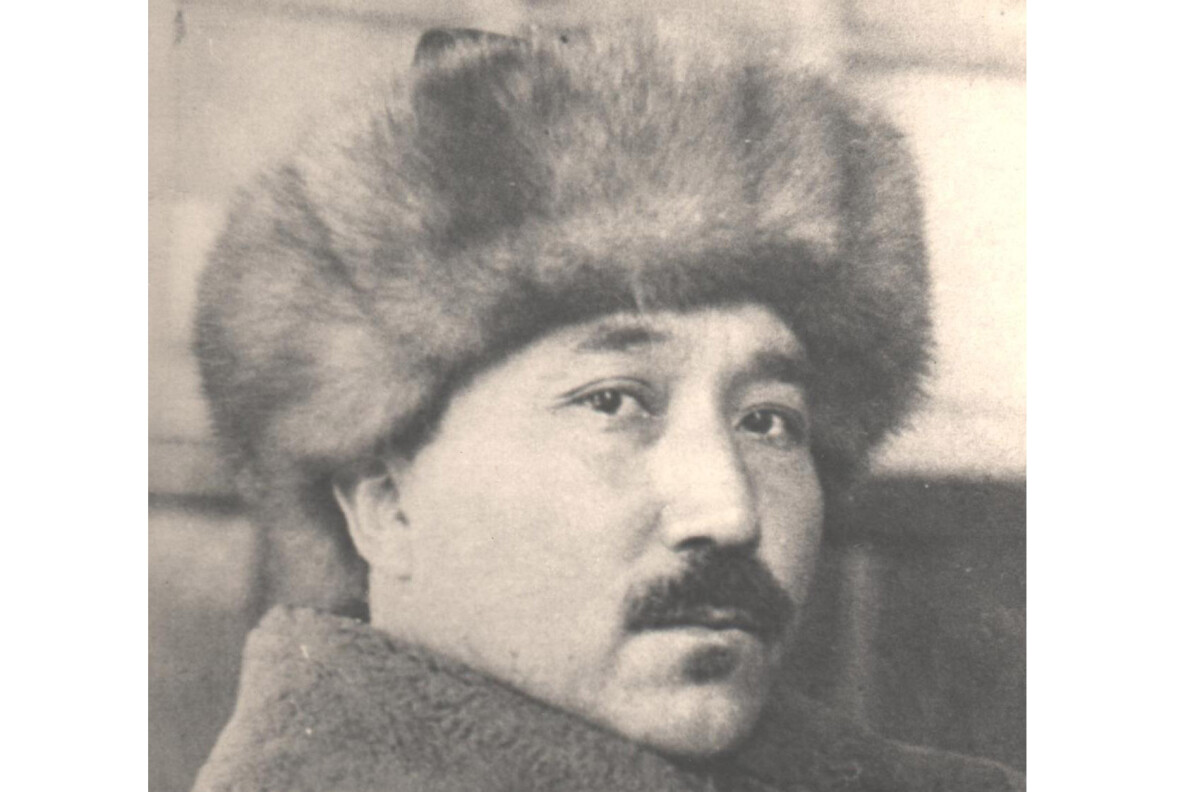
Saken Seyfullin was born on October 15, 1894 in the Zhanaarkinsky region of the Karaganda region. Its real name — Sadvakas. However, the famous Kazakh writer, poet and public figure will carry for the rest of his life the name Saken, which was given as house tender nickname.
His family was poor. Saken’s father had an ear for music and was master of dombra (Kazakh traditional string musical instrument). His mother Zhamal was skillful storyteller, the expert on folklore.
Autobiographical data about Saken Seyfullin are provided in the collection «Soviet Writers» of 1959. Here’s what he wrote about the parents in his autobiographies: «My father was the cheerful person and a good dombrist (musician who plays in dombra). He used to love hunting, kept hunting birds, and mother was the friendly woman, the good storyteller… Songs, fairy tales, epic poems and wonderful legends could be heard anywhere and everywhere in our village. Songs and music were so significant especially in long nights of late fall and severe winter by the fire, where behind the hills swirl blizzard winds. Our father was a hunter. At his spare time he liked to tell fairy tales, legends and hunting stories which he had a lot, like all hunters. In villages often held parties, celebrations and aitys (singing competitions) were organized. These songs, aitys, fairy tales and legends remained in my mind since young age. I still remember many aitys songs».
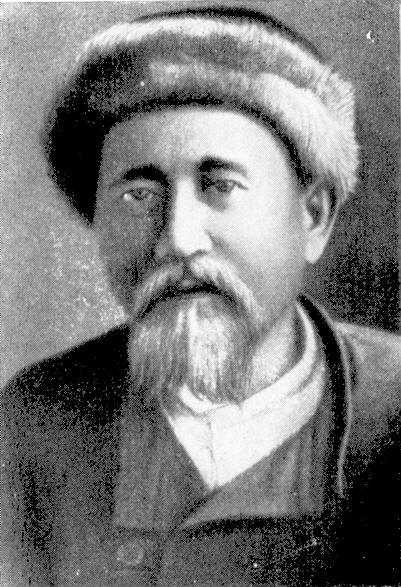
Father of the writer
His first education he had got from village mullah. At the age 11 he was sent to Nildinsky (Uspensky) school of mine for learning Russian grammar. Later the poet remembered: «I spent three years in Nilda. The lessons I have received, on the one hand, at school, on the other hand — learnt from life: saw how work conducted in smithy, how people work in the mines under the ground, how hard for them at the top, where they erected mountains of coal and ore, I used to be in their hostels, houses and knew their way of life and heard a lot directly from them. All of these left me with lasting impressions».
In 1908 — 1913 years Saken studied at Akmolinsk at first at parish school, and then at two-levelled college. From 1913 to 1916 young Saken Seyfullin studied in Omsk teacher’s seminary which was called quite often the Siberian University. Indeed, such seminaries, under the certificate of the academician of A. Margulan, gave to the pupils «… rather strong knowledge… It is possible to tell in volume of modern teacher training colleges». Those who graduated it differed in strong knowledge and advanced views.
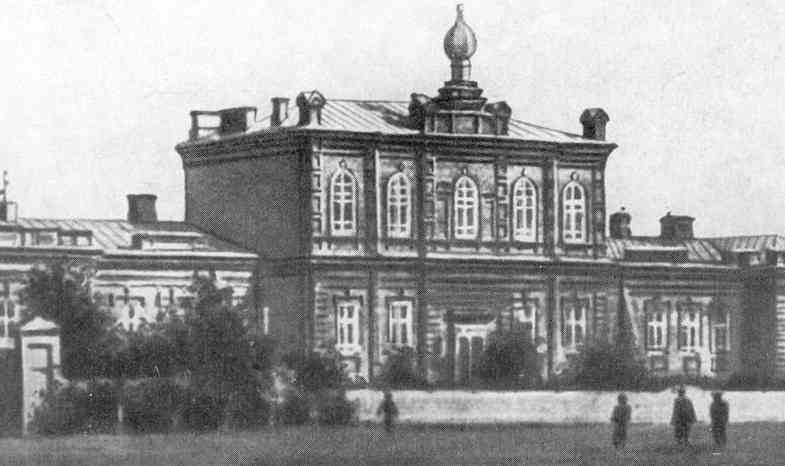
Omsk’s teacher’s seminary
As it was written in the book «Saken Seyfullin: sketch of the life and work» of Nurbolat Dzhuanyshbekov Omsk at that time was the center of the tumultuous political events. Very quickly, the future poet becomes an active member of the student organization of the Kazakh revolutionary youth «Birlik» («Unity»), he was frequent speaker at its secret gathering and liaises with the revolutionaries. Political activities of the poet soon found themselves under the close supervision of the secret policy (department for the guarding of public safety and order).
In 1914, the first collection of verses of young poet «The last days», in which he thought about destiny of the Kazakh people, complained about a difficult life of poor people and old patriarchal customs.
In 1916, Saken Seyfullin graduated Omsk teacher’s seminary. He worked there for some time in the Bugulinsky School organized by him. On March 9, 1917 the young poet full of the advanced revolutionary views moved to Akmolinsk.
From1917 to 1918 he took active part in creation of Council of workers and country deputies in Akmolinsk. He was elected as the member of its presidium and the commissioner of education and was the head of the youth organization «Zhas Kazakh». At the request of this organization’ members wrote the first revolutionary Kazakh song — «A Marseillaise of the Kazakh youth». In May, 1918 as a result of mutiny the Soviet power in Akmolinsk was overthrown and heads of Council, including S. Seyfullina, were captured.
Late fall 1918 in forty-degree frosts they were delivered by a stage to Petropavlovsk, from where they in «death cars» within 47 days were carried to the Omsk concentration camp. Prisoners had the hardest deprivations and torments in prisons of Akmolinsk and Petropavlovsk. They were tortured by White Guards, for months kept in the chilled and blown «death carriages» (the name was given due to the fact that a lot of people died in these carriages) which are so precisely described by the writer in «Thorny road».
«… Our train with a roar went to east, in depth of Siberia. Everything around was covered with deep snow. The snow-storm did not cease. The birches half covered by snow, rustling and fluctuating from a wind, bent tops as though sent the last „farewell“ for those who were on the way towards to death. The car door now all the time was densely closed. Bread was given out to us in two-three days once, on a quarter of pound per day on the person. Even water was given insufficiently. Firewood or coal had to be taken in the engines getting in the way. Drivers, fortunately, spent enough fuel to us. We had it enough and sat by the hot oven all the time. Ashes were scattered on a floor. Hungry, we pressed close to an oven as if powered with its heat. From a heat dried up in a mouth, and strong thirst tormented. During a train stop, knocking at the door, we asked waters, but escorts were deaf to our requests.
Eyes fell, to the dried bones, as the tense belt was stuck the skin. The face and hands forgot about water long ago. To be refreshed in the morning when we were brought, we hurriedly rubbed hands and a face cold snow. The faces which blackened from coal dust after grinding became motley. We slept on a floor, near an oven, boards of plank beds everything were almost burned, there were those from them on which patients lay. Every day the number of patients — grew in both carriages» — Seyfullin later will write.
S. Seyfullin survived due to escape in March 1919. «Across the Sands of Moinkum, through the Hungry steppe within many months the poet returned to the native land to join revolutionary fight again» — wrote Nurbolat Dzhuanyshbekov. In 20’s Saken Seyfullin restored his documents and returned to Akmolinsk.

M. Aytpenov's house in the Omsk city where Saken Seyfullin hided when he made escape from prison
Propaganda and promotion were led by him. He was the ruler of national education and the press. In 1920 when the Kazakh Autonomous Republic was created, Seyfullin was elected as the member of Presidium of Central Election Committee of Kazakhstan. In 1922 he was appointed as the deputy national commissioner of education of the republic, and at the 3rd congress of Councils — the Chairman of the board of National Commissioners of Kazakhstan. At the same year he was elected as the member of All-Russian Central Executive Committee.
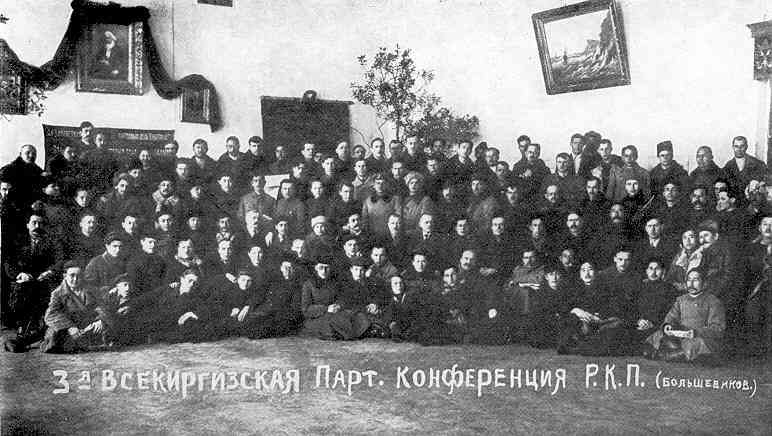
3rd All-Kirgiz party conference in 1922. Saken Seyfullin: second row, the second at the left
For the writer, who was worried about national problem, 1923 was the year when he followed a way of fight, after realizing that dependence of national destiny on destiny of language, and having understood that without it independence would not be full. He was strongly disturbed by the last meeting of the 12th congress of Bolshevist party which took place on April 17–25, 1923, where question about ethnicity was brought up. The ideas that the Russian culture will took over cultures of other nationalities, also that it is necessary to strengthen superiority of the Russian nation sooner or later were openly introduced at this meeting.
Saken, being shocked by what he heard, began to look for solutions of problems that are so important for destiny of people. He began to raise difficult questions that linked with giving to the Kazakh language the official status.
Taking a look of near and far history of the people, the writer began to seek for persons whose activity could serve as an example in this question. Saken had good respect one of the leaders of Alash Akhmet Baitursynov, who put many efforts to education of people. These actions of S. Seyfullin, who asked Akhmet Baitursynov, who connected people’s destiny and language, also who brought up such political affairs at the moment when his own destiny hung by a thread, characterized greatness and inflexibility of Saken’s spirit. S. Seyfullin was also great person for the people as Akkmet Baitursynov.
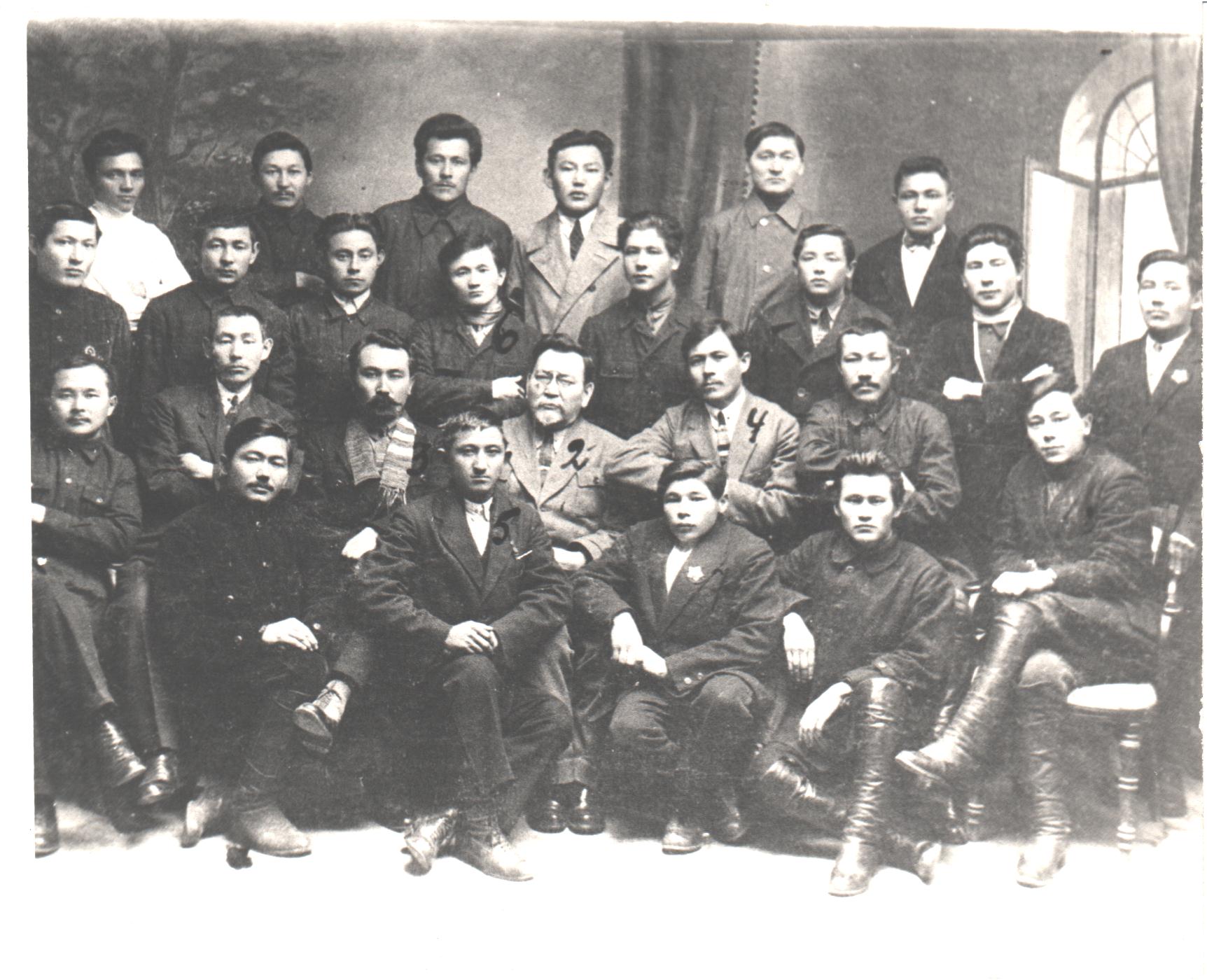
Rector of Kazakh Institute of National Education S.Seyfullin with A.Baitursynov among the teachers and students of Kyzylorda in 1922
Saken claimed that Kazakhstan would not prosper until the Kazakh language would not be introduced in public institutions. Without raising the status of language it is impossible to lift the status of the people. On June 9, 1923, he published the article «Office business should be run in the Kazakh language». In total he wrote 9 articles, about protection of interests of language, using for this purpose newspaper «Enbekshi Kazakh», which was run by Saken himself. Thanks to Saken’s efforts, on November 22, 1923, All-Russian Central Committee adopted the decree according to which since July 1924 office business had to be executed in the Kazakh language.
On December 1926, Saken married, his wife was Gulbahram Batyrbekova. Their wedding was held in Kyzylorda. From that day Gulbahram became not only beloved wife, but also the friend and his assistant.
Few people know that S. Seifulin had two children, daughter Laura and son Ayan. Unfortunately, both children died at an early age.
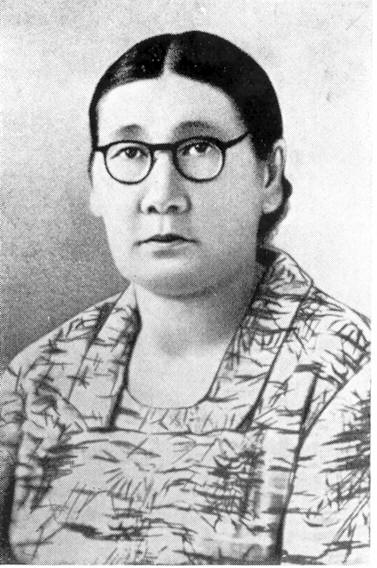
Gulbahram Seyfullina, 1963
Since 1927 until his arrest in 1937 Seyfullin catastrophically did not have time. He was the rector of several universities, without giving up his pedagogical activity. Saken was chief editor of newspaper «Enbekshi Kazakh» and magazine «Literary Front», created the Union of writers of Kazakhstan. He was engaged in scientific and translation work, also most important he did not stopped to write.
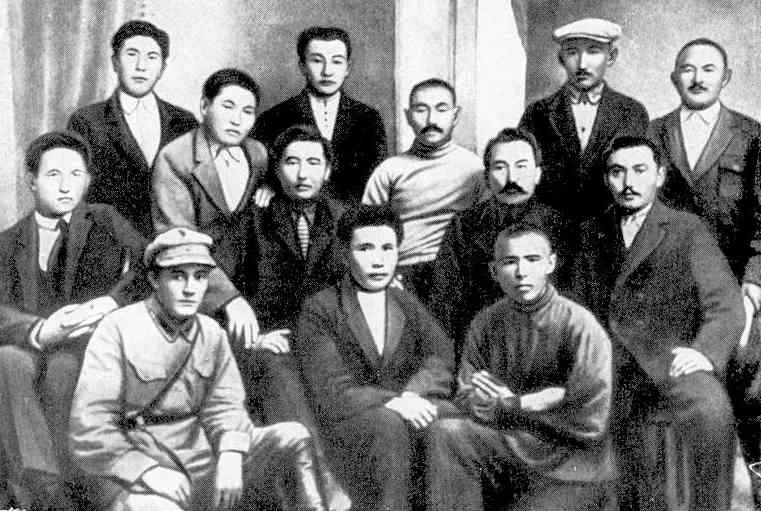
Kazakh writers, 1930
He published collections of verses such as «On life waves» (1928), «Kokche-tau» (1929), a number of poems «Albatross» (1933), «Kzyl-at» («A red horse», 1934), writes stories, stories, novels. The writer also writes the articles about the Kazakh fiction. In one of them he will write: «In the Kazakh literature now two directions clearly were defined. First one — for bay (rich people), another — for proletarian. Among writers there are also unstable. They did have their own personality. However, from year to year unstable becomes less and less. They will come over to the side of a labor class… Because the future of the Kazakh literature belongs to a labor class» (The life of remarkable people, T. Kakishev «Saken Seyfullin»).
Researchers of life and works of the writer note that the name of Saken Seyfullin is closely connected with Akmolinsk where he studied, conducted active political life, was arrested, participated in establishment of the Soviet power and created family. However, Seyfullin’s thought about Kokshetau was not less trembling than Akmolinsk. In the poem of the same name he linked history and the present, with pleasure looked forward, used the stories and romantic legends of Kokshetau’s beauty grief absorbed in the childhood. According to T. Kakishev, the poet with all the heart rejoiced to construction of the town, believed that «Borovoe» will become the all-Union resort. He was happy to the trains, buses, cars which filled old caravan tracks.
In March 1931, the writer had completed work on the first book on the history of Kazakh folklore. And he had interests in different genres. He began to write a satirical novel «Our way of life», in parallel he wrote the poem «Kyzyl at» and «Albatross».
July 12, 1936 is significant day in the biography of the writer. Kazakhstan celebrated 20th anniversary of literary activity of the national writer Saken Seyfullin. The hero of the anniversary hardly managed to receive and read congratulatory telegrams, as literary the resolution of Kazakh Central Election Committee stunned the writer:
«The resolution of the Central Executive Committee of Kazakhstan in connection with the 20th anniversary of creative activity of Saken Seyfullin on the literary front:
1. To give Semipalatinsk Teacher’s Institute, the Kazakh high school, station of Alma-Ata, street in Akmolinks and street «Naberezhnaya» (Quay) in Kokchetav the name after Saken Seyfullin;
2. Road № 11, where Zhezkazgan branch of Karaganda-Balkhash railroad begins to name after S. Seyfullin;
3. To allocate the car in private use of S.Seyfullin.
20 years passed. Evening again was devoted to Saken Seyfullin, but already his memories. Sabit Mukanov said such words: «The founder of the Kazakh Soviet literature Saken Seyfullin succeeded in all genres. He gave them a foundation. Therefore, he, I repeat once again, the person who laid the foundation for the Kazakh Soviet literature. However, he was not only the founder of this Soviet literature, but a person who until the end of the life developed all these genres. Saken — the father of the Kazakh Soviet literature».
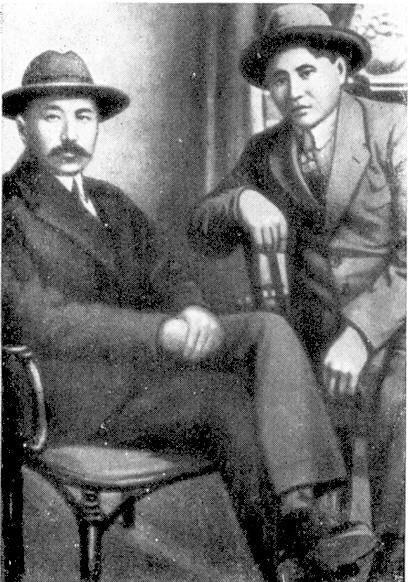
Saken Seyfullin and S.Mukanov, 1927
Sabit Mukanov, the friend and the follower, once wrote about Seyfullin’s novel: «Thorny road» — it is, on the one hand, history, on the other hand — the textbook of the political diploma, and finally — the most interesting, the work of art capturing the reader». This work was achievement not only the writer, but also all Kazakh literature. «Thorny road» gave a classical subject lesson to all Kazakh writers as it is necessary to create works on a modern subject. These words can be carried to all creativity of Saken Seyfullin.
In the mid-thirties Saken Seyfullin, the famous public figure of Kazakhstan, the poet, the writer and the teacher was at the peak of his creative activity. In its 1936 as the eminent public figure was invited to Moscow to celebration of the 100th anniversary since the birth of A. S. Pushkin. At the same year he was awarded the order by the first of the Kazakh writers the Labour Red Banner.
In 1937, Saken Seyfullin was arrested in Alma-Ata, the spouse Gulbakhram with the son Ayan was compelled to come back to Akmolinsk escorted by officials. The little boy was not be able to near such a long way. For the rest of his life Saken would not know that his son died and buried in Kokshetau. For 10 years his spouse would be ignorant about the destiny of her husband.

Gulbahram Seyfullina with son Ayan, 1936
There is information about exact death of Saken Seyfullin. He was shot as «the enemy of the people» in one of People’s Commissariat for Internal Affairs prisons in Alma-Ata in 1938 on April 25 at 4.40 pm. The father and the elder brother of «the enemy of the people» Saken Seyfullin had the same fate. In 1937 both of them were arrested and shot.

The last photo of S.Seyfullin, 1938
So, just in one flash the life of Kazakh writer and poet, innovator, educator and public figure was broken. The Soviet power, which he glorified and sincerely believed, destroyed him. Talented, educated, intelligent Saken Seyfullin chose to himself a thorny road…
Photos taken from seifullin.ru
